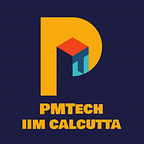Introduction to ERP and CRM Systems
ERP stands for Enterprise Resource Planning. The objective of the planning is to increase efficiencies in the processes across business activities and drive profitability. In common usage, ERP refers to the software used to integrate the main functions of an organization’s business processes into a unified system.
History of Integration Software
ERP’s roots start in Material Requirements Planning (MRP), a system for calculating the materials and components needed to manufacture a product that was developed by IBM in 1964. By the 1970s, MRP software was a mainstay of manufacturers.
MRP remained the manufacturing standard until manufacturing resource planning (called MRP II) was developed in 1983. MRP II featured “modules” as a key software architectural component, and integrated core manufacturing components including purchasing, bills of materials, scheduling, and contract management. For the first time, different manufacturing tasks were integrated into a common system. MRP II also provided a vision of how organizations could leverage software to share and integrate enterprise data and boost operational efficiency with better production planning, reduced inventory, and less waste.
As technology evolved, concepts similar to MRP II were developed to handle business activities beyond manufacturing, incorporating finance, customer relationship management, and human resources data. This software for business management came to be known as Enterprise Resource Planning.
However, the implementation of ERP systems was costly in its initial days with the hardware required to run the software typically hosted on company premises, with big machines in a server room. Both the hardware and software licenses required capital investments and depreciated over 5 to 10 years.
With time, a software-as-a-service (SaaS) delivery model became more prominent for ERP with data stored on the cloud, running on a network of remote servers instead of inside a company’s server room. The advancement in tech also increased the scope of ERP from automation and integration to analytics and the basis for decision-making processes in businesses.
The major vendors providing ERP software are SAP (22% market share) and Oracle (11% market share).
A Use Case
Let’s take an example of a vertically integrated pharmaceutical firm, owning the value chain from production to last-mile sales. If we consider the traditional way of working, one can recall shopkeepers keeping registers for medicines list to be ordered based on demand and availability. The shopkeepers based on the register data will place an order to regional distributors, who keep their own registers. And this will finally lead to information about production required to the manufacturing unit and delivery of medicines to shops through stages post that.
Here, the first level of efficiency comes from digitization at each of these stages. The second shall come from automatic integration of all these individual data points to have a common copy to refer to for all stages.
This is achieved via the implementation of ERP with different but integrated modules for each stage. A sales order created by the shopkeeper via the CRM module will be shared with the production module, so the manufacturing department will have the information about what product to make. When the product is shipped, data in the inventory management module changes, and when the customer pays, the accounting module records the revenue. With an update in one stage, all other stages get automatically updated, thus leading to a “single source of truth” for data across the chain.
CRM
While most of the modules (different business functions) are integrated within one ERP system itself, one module which has received special focus and standalone software for working has been Customer Relationship Management (CRM). This is primarily due to the limited features in the CRM module under the traditional ERP systems. Though, lately, most of the ERP software comes with well-integrated and exhaustive CRM features.
The goal of CRM is to improve customer service relationships and assist in customer retention and drive sales growth. CRM systems compile customer data across different channels, or points of contact, between the customer and the company, which could include the company’s website, telephone, live chat, direct mail, marketing materials, and social networks. CRM systems can also give customer-facing staff members detailed information on customers’ personal information, purchase history, buying preferences, and concerns. This leads to better and faster service for the customers.
The traditional use of CRM has been to record customer data and use the trends for overall marketing campaigns. With increased penetration of social media and focus on competition in personalized services, CRM tools upgraded for firms to be able to have customized campaigns for individuals. The prime example of this is the recommendation system of Amazon.
The top four vendors of CRM systems are Salesforce, Microsoft, SAP, and Oracle.
References:
1. https://www.oracle.com/in/erp/what-is-erp/
2. https://searcherp.techtarget.com/definition/ERP-enterprise-resource-planning
3. https://searchcustomerexperience.techtarget.com/definition/CRM-customer-relationship-management
Govinda Nathani
IIM Calcutta 2019–21
